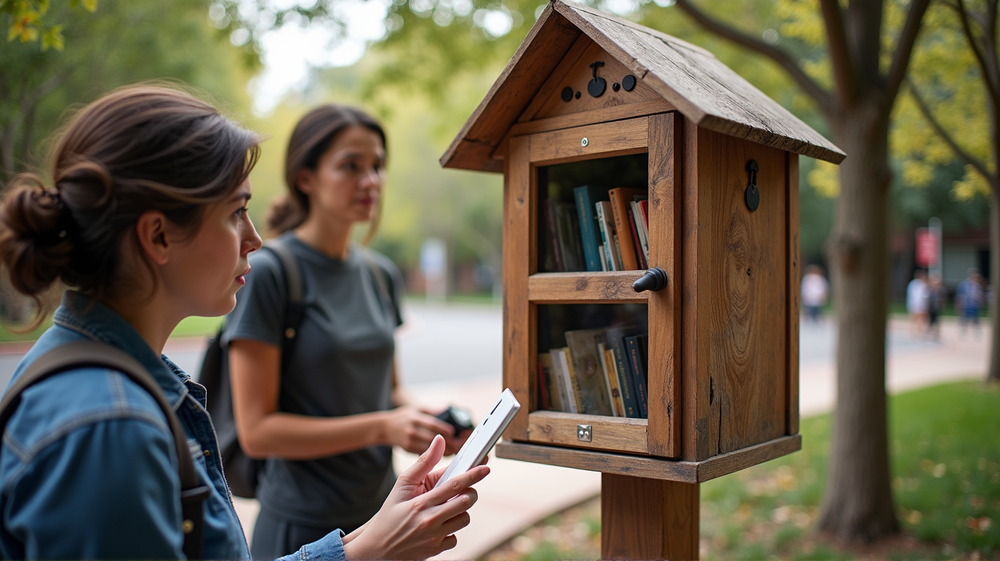Chapman Students Ignite a Movement: The Surprising Connection Between Little Free Libraries and Bigger Issues
In a world grappling with complex social dynamics, students at Chapman University are making waves with a unique initiative that sparked powerful conversations about censorship and diversity. This tale, at once engaging and insightful, unfolds not within the confines of a classroom, but rather through unconventional means — Little Free Libraries.
A Bold Move: Locking Up Knowledge
It began with something as simple as locking Little Free Libraries around campus. While it may seem counterintuitive, this act was far from a mere prank. According to Los Angeles Times, Chapman students deliberately chose to secure these beloved book-sharing boxes to initiate a broader dialogue on censorship. By creating a public display of restricted access to books, they drew attention to a theme that echoes across history and resonates deeply today: the delicate balance between freedom and control of information.
Conversations Bloom from Adversity
The locked libraries quickly became a talking point, transcending the campus and entering wider discourse. Students, faculty, and community members engaged in vibrant discussions that explored the nuances of censorship and the importance of open access to diverse perspectives. This playful yet profound protest highlighted a universal truth: restricting access to knowledge can stifle growth, understanding, and inclusive dialogue.
Diversity at the Core
At its heart, the initiative wasn’t just about censorship; it was equally a call for embracing diversity in literature and thought. The students aimed to spotlight the richness that diverse voices bring to the bookshelf and beyond. By challenging the norms and questioning who gets to decide what is available, they encouraged a re-evaluation of priorities within educational systems and society at large.
A Creative Legacy
This movement is a testament to the creativity and passion of the younger generation. As stated in Los Angeles Times, it emphasizes how students, given a platform, can be catalysts for meaningful change. They transformed an everyday object—a Little Free Library—into a symbol of larger societal issues, blending art with activism.
The Ripple Effect
The impact of Chapman’s initiative continues to ripple through the community. Other institutions have taken note, seeing the potential for such creative approaches to advocacy. It’s not just about keeping doors to knowledge open, but also about ensuring that those doors lead to diverse and inclusive spaces that welcome all voices.
Conclusion: Turning the Key to Change
In an era where conversations about censorship and diversity are more relevant than ever, the actions of Chapman students serve as a powerful reminder of the impact of creative activism. By locking up Little Free Libraries, they unlocked a world of discussion and potential change, paving the way for a broader understanding and appreciation of diverse narratives and the significance of unrestricted access to information.
This story of ingenuity showcases how a small, thoughtful act can ignite a larger movement, proving once again that the voices of the young are essential in shaping the world they inherit.




